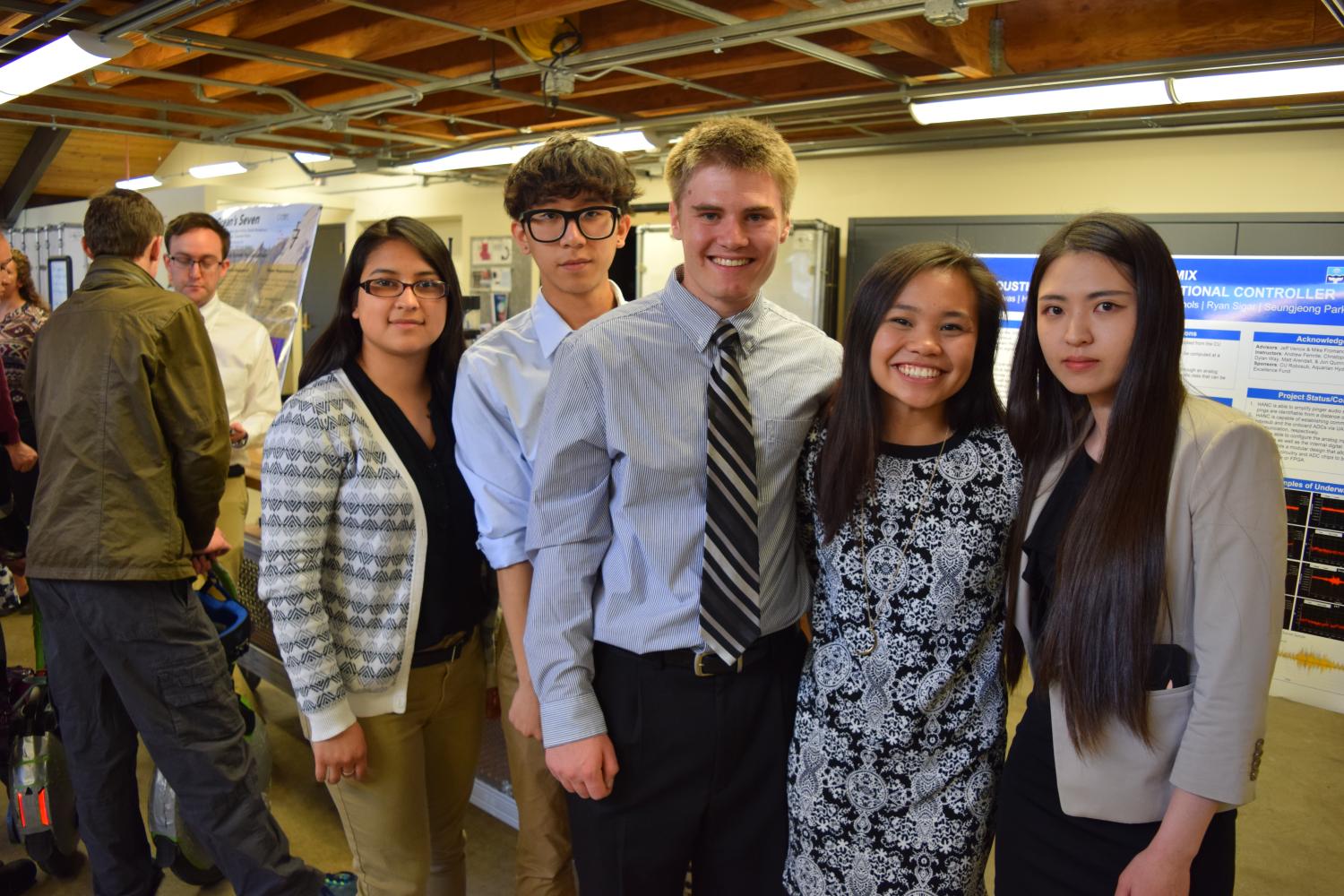HydroDynamix

Thank you to our sponsor, the CU RoboSub Club!
There are a variety of obstacles the CU RoboSub team will encounter during the 2017 RoboSub Competition, an International Autonomous Underwater Vehicle Competition. Of these obstacles, the final three are worth the most amount of points and are the most difficult. It requires the competing teams’ autonomous underwater vehicles (AUVs) to be able to locate Benthos ALP-365 pingers using a hydrophone system, which emit underwater acoustic signals at a randomly selected frequency in the 25 - 40 kHz range. In previous years, the CU RoboSub team has not been able to successfully accomplish those tasks.
Implementing a hydrophone array system on the CU RoboSub’s AUV capable of locating the pingers is crucial for helping the CU RoboSub team advance further in the RoboSub competition. A solution is a hydrophone array system that interfaces with five hydrophones to locate the direction of the underwater pingers. Data collected from the hydrophones can be used to calculate heading data that will be transmitted to the CU RoboSub for navigation and guidance toward underwater pingers. The hydrophone array will need to use appropriate filtering techniques to attenuate the effects of background noise, calculating the heading data in a timely manner, and transmitting the data to the main CU RoboSub computer reliably and in real-time.
An algorithm that can be used to calculate the heading data is Time Delay on Arrival (TDOA). Variations of the TDOA algorithm have been used by other teams who have participated in the RoboSub competition and their implementations have been proved to be successful, indicating TDOA feasibility.
Customer
The CU RoboSub is an autonomous robotic submarine designed by the CU Robotics team that competes internationally with other robotic submarines developed by students from many universities. In previous years, the CU RoboSub team has only been able to compete in the first few tasks, where the AUVs are guided by visual markers. The hydrophone system will allow the team to compete in the remaining two tasks where pingers will be used to guide the AUVs.
Product Capabilities
- CU RoboSub hydrophone array system can receive underwater audio and use the signals to identify the direction toward Benthos ALP-365 pingers with respect to the current position of the CU RoboSub.
- The hydrophone system supports synchronous A/D conversion of audio signals by multiple hydrophones.
- The hydrophone system attenuates the effects of background noise, therefore giving the CU RoboSub the capable of determining the general direction toward the Benthos ALP-365 pingers inside the competition course.
- The hydrophone system can calculate the heading data in a timely manner, allowing reliable, real-time data transmission to the CU RoboSub main CPU.
Project Risks
- If damaged, hydrophones will transmit faulty data audio readings from Benthos ALP-365 pingers.
- Housing of the hydrophone system may become unstable or damaged during testing or the course of the competition. This may lead to a total system failure in the event of a water leakage.
- Collaboration with the capstone team responsible for developing the backplane of the CU RoboSub is essential to ensure the Hydrophone Array can establish end-to-end communication with the CU RoboSub’s main CPU and to ensure adequate power is provided to the hydrophone system.

